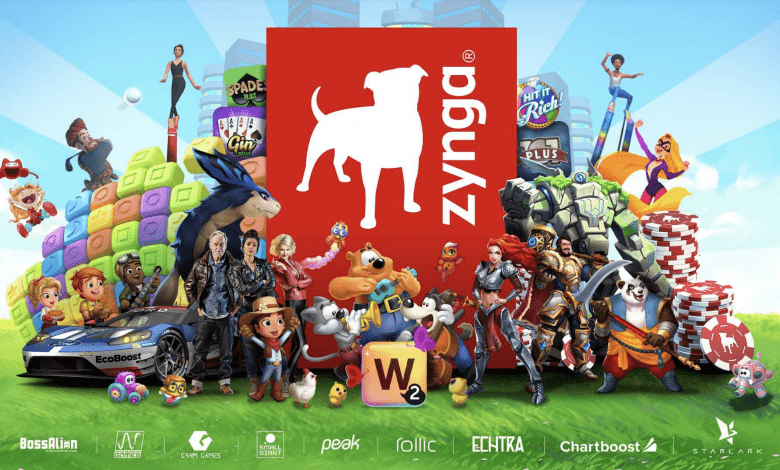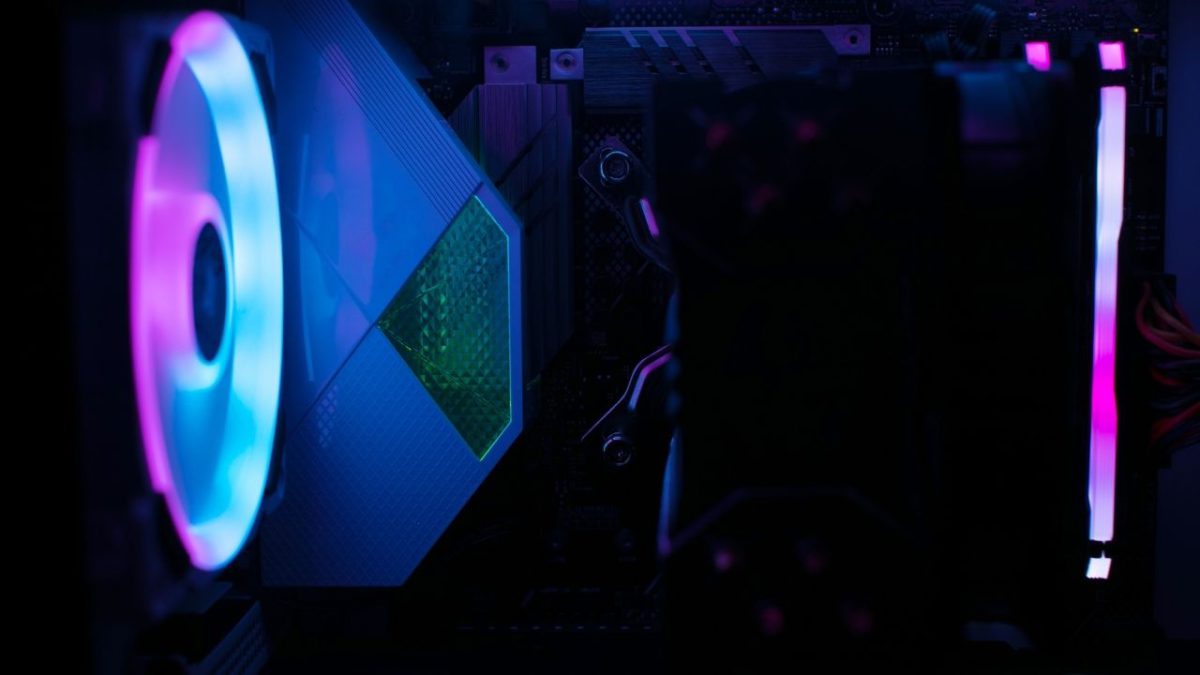Top 10 Blockchain Gaming Companies That Got Series Funding In 2023
Blockchain gaming is an emerging concept that combines blockchain technology with video games, creating a new paradigm for interactive entertainment. It introduces decentralized and transparent systems that offer unique benefits to both players and developers. In traditional gaming, players have limited control over in-game assets, and the ownership of these assets is usually controlled by the game’s publisher. However, blockchain gaming aims to revolutionize this by providing true ownership and control of in-game assets to the players themselves.
At its core, blockchain gaming utilizes the decentralized nature of blockchain technology to enable peer-to-peer transactions and verifiable ownership of in-game assets. In a blockchain game, the game assets are represented as non-fungible tokens (NFTs) or digital collectibles. NFTs are unique tokens that can represent various in-game items such as characters, weapons, skins, virtual real estate, and more. Each NFT is indivisible and cannot be replicated or replaced, making it truly unique and valuable.
The use of blockchain technology in gaming brings several advantages. Firstly, it allows players to have true ownership and control over their in-game assets. Since these assets are stored on the blockchain, players can transfer, trade, or sell them outside of the game’s ecosystem. This opens up new possibilities for players to monetize their gaming achievements and invest in valuable digital assets.
Moreover, blockchain gaming introduces transparency and fairness into the gaming ecosystem. The decentralized nature of blockchain ensures that game rules and transactions are recorded on a public ledger, creating a transparent and auditable environment. This prevents cheating, fraud, or manipulation of in-game items, providing a level playing field for all players. Additionally, blockchain technology enables provable scarcity and rarity of in-game assets, making them more valuable and desirable for collectors.
Another aspect of blockchain gaming is the concept of play-to-earn. In traditional games, players invest time and effort into playing, but they rarely receive any tangible rewards. However, in blockchain games, players can earn cryptocurrency or other valuable rewards by participating in the game’s ecosystem. This can include completing quests, achieving high scores, or contributing to the game’s development. Play-to-earn models have the potential to transform gaming into a viable source of income for players in some cases.
Furthermore, blockchain technology facilitates the creation of open economies within games. Developers can design their games with built-in marketplaces where players can freely buy, sell, and trade in-game assets. These decentralized marketplaces operate on smart contracts, which eliminate the need for intermediaries and enable secure peer-to-peer transactions. Players can directly interact with each other in the economy, fostering a dynamic and thriving ecosystem.
Several blockchain gaming platforms and ecosystems have emerged in recent years. Examples include Ethereum-based games like CryptoKitties, where players can collect, breed, and trade virtual cats, or Decentraland, a virtual world where players can own and monetize virtual real estate. Other platforms like Enjin and WAX offer tools and infrastructure for game developers to integrate blockchain technology into their games easily.
Despite the potential and excitement surrounding blockchain gaming, there are still challenges to overcome. The scalability of blockchain networks is a significant concern, as they need to handle a large number of transactions and ensure fast and inexpensive operations. Additionally, user adoption and education about blockchain technology remain crucial for the widespread adoption of blockchain games.
In conclusion, blockchain gaming represents a disruptive innovation in the gaming industry. By leveraging the decentralized and transparent nature of blockchain technology, it offers players true ownership of in-game assets, transparent and fair gameplay, opportunities for earning rewards, and vibrant in-game economies. While the concept is still evolving, blockchain gaming has the potential to revolutionize the way we play and interact with video games, providing new avenues for creativity, ownership, and engagement.
Also read: How Blockchain Gaming Can Take Over Traditional Gaming
Importance of Blockchain gaming for the economy
Blocks in gaming, or blockchain technology in gaming, can play a significant role in shaping and enhancing the in-game economy. By introducing decentralized and transparent systems, blockchain technology brings several important benefits to the gaming economy, impacting both players and developers.
1. True Ownership and Value: Blockchain technology enables players to have true ownership and control over their in-game assets. Traditionally, game assets are owned by the game publisher, and players have limited control over them. However, with blockchain, in-game assets can be represented as non-fungible tokens (NFTs), which are unique and indivisible tokens. These NFTs can be bought, sold, and traded on decentralized marketplaces. This introduces a new level of value to the in-game assets, as players can own and accumulate assets that have real-world value.
2. Player-Driven Economy: Blockchain gaming facilitates the creation of player-driven economies within games. In a traditional game, the game publisher controls the virtual economy, dictating the availability, pricing, and distribution of in-game assets. In contrast, blockchain technology allows developers to design open economies where players can freely trade and exchange in-game assets. This empowers players to participate actively in the economy, driving supply and demand, determining prices, and creating a dynamic marketplace.
3. Opportunities for Monetization: Blockchain gaming provides new avenues for players to monetize their gaming experiences. By allowing players to own and trade in-game assets, blockchain games enable players to earn real-world value from their virtual achievements. Players can sell rare items, characters, or virtual real estate to other players, creating opportunities for profit. This play-to-earn model can potentially transform gaming from a mere pastime into a viable source of income for some players.
4. Transparency and Trust: The transparent nature of blockchain technology ensures trust and fairness in the gaming economy. In traditional games, transactions and item distribution are often opaque, leading to concerns about cheating, fraud, or manipulation. However, blockchain gaming records all transactions on a public ledger, creating a transparent and auditable system. This enhances trust among players, as they can verify the authenticity and scarcity of in-game assets. It also provides developers with a reputation system, allowing players to evaluate the credibility of developers and their games.
5. Collaboration and Interoperability: Blockchain technology enables interoperability among different games and platforms. Through standardized protocols and smart contracts, in-game assets can be transferred or used across multiple games. This allows players to carry their assets and achievements across various gaming experiences, fostering collaboration and continuity. It also opens up opportunities for partnerships and crossovers between different games and developers, creating a vibrant ecosystem.
6. Anti-Fraud Measures: Blockchain technology provides robust security against fraud and counterfeiting of in-game assets. The decentralized and immutable nature of blockchain ensures that once an asset is recorded on the blockchain, it cannot be tampered with or replicated. This prevents unauthorized duplication or creation of fake assets, protecting the integrity of the economy and maintaining the value of the in-game assets.
Overall, the introduction of blockchain technology in gaming has the potential to revolutionize the in-game economy by offering true ownership, value, transparency, and opportunities for monetization. It empowers players, creates a player-driven economy, enhances trust, and encourages collaboration and interoperability. As blockchain gaming continues to evolve, it can provide exciting possibilities for economic growth and innovation within the gaming industry.
https://www.youtube.com/watch?v=iUgG7CKt23c
Top 10 blockchain gaming companies that got series funding in 2023
Blockchain gaming is a rapidly growing industry, and investors are taking notice. In 2023, a number of blockchain gaming companies raised significant sums of money in series funding rounds.
Here are the top 10 blockchain gaming companies that got series funding in 2023:
- Animoca Brands
Animoca Brands is a Hong Kong-based company that develops, publishes, and invests in blockchain games and products. The company has raised over $1 billion in funding, and its portfolio includes popular games such as The Sandbox and Axie Infinity.
- Sky Mavis
Sky Mavis is a Vietnamese company that developed the popular blockchain game Axie Infinity. The game has over 2 million daily active users, and it has generated over $2 billion in revenue. In 2023, Sky Mavis raised $1 billion in a series B funding round led by Andreessen Horowitz.
- Mythical Games
Mythical Games is a San Francisco-based company that develops blockchain games. The company has raised over $500 million in funding, and its portfolio includes the popular game Blankos Block Party.
- Decentraland
Decentraland is a decentralized virtual world that runs on the Ethereum blockchain. The platform allows users to buy, sell, and build virtual land. In 2023, Decentraland raised $26 million in a series B funding round led by Animoca Brands.
- Sandbox
The Sandbox is a decentralized gaming platform that runs on the Ethereum blockchain. The platform allows users to create, build, and monetize their own games. In 2023, The Sandbox raised $93 million in a series B funding round led by SoftBank Vision Fund 2.
- Aavegotchi
Aavegotchi is a blockchain-based collectible game that allows players to collect, trade, and battle Aavegotchis, which are pixelated ghosts. In 2023, Aavegotchi raised $30 million in a series A funding round led by Animoca Brands.
- Alien Worlds
Alien Worlds is a play-to-earn blockchain game that allows players to mine Trilium (TLM), the game’s native currency. In 2023, Alien Worlds raised $10 million in a seed funding round led by Ascensive Assets.

- Gods Unchained
Gods Unchained is a free-to-play trading card game that uses the Immutable X blockchain. The game allows players to collect, trade, and battle cards. In 2023, Gods Unchained raised $30 million in a series B funding round led by Dapper Labs.
- REVV Racing
REVV Racing is a blockchain-based racing game that allows players to collect, race, and trade cars. The game is developed by Animoca Brands and will be released on the Ethereum and Polygon blockchains.
- Sandbox Evolution
Sandbox Evolution is a blockchain-based sandbox game that allows players to create, build, and share their own worlds. The game is developed by Sandbox Interactive and will be released on the Ethereum blockchain.
These are just a few of the many blockchain gaming companies that received series funding in 2023. The growth of the blockchain gaming industry is a testament to the potential of this new technology to revolutionize the gaming industry.
Also read: Top 5 Blockchain Gaming Platforms Transforming The Industry
Benefits of blockchain gaming
Blockchain gaming offers a range of benefits that can revolutionize the gaming industry. Here are the key advantages of blockchain gaming:
1. True Ownership of In-Game Assets: In traditional gaming, players invest time and money into acquiring in-game assets, but they usually don’t have true ownership over them. With blockchain gaming, in-game assets are represented as NFTs, which are stored on a blockchain. This gives players verifiable ownership, allowing them to transfer, sell, or trade their assets outside the game’s ecosystem. Players have control over their digital property, which enhances player agency and creates a sense of value and permanence for their in-game possessions.
2. Transparent and Immutable Transactions: Blockchain gaming introduces transparency and immutability to in-game transactions. All transactions, such as asset transfers or purchases, are recorded on the blockchain and can be publicly audited. This transparency eliminates concerns about fraud, cheating, or manipulation of in-game assets. It ensures that all transactions are verifiable and tamper-proof, enhancing trust among players and promoting fair gameplay.
3. Provably Scarce and Unique Assets: Through blockchain technology, game developers can establish scarcity and uniqueness for in-game assets. Each NFT represents a distinct item or collectible, making it rare and valuable. The scarcity is provable and cannot be altered, adding a new layer of authenticity and rarity to digital items. This creates a market for collectors and enthusiasts who are willing to invest in unique and limited-edition assets.
4. Play-to-Earn Opportunities: Blockchain gaming introduces the concept of play-to-earn, allowing players to earn real-world value by participating in the game. Players can earn cryptocurrencies or other valuable rewards by achieving milestones, completing quests, or contributing to the game’s ecosystem. This introduces a new incentive structure where gaming becomes a potential source of income for players, attracting a broader audience and increasing engagement.
5. Decentralized In-Game Economies: Blockchain gaming enables the creation of decentralized, player-driven economies within games. Developers can design in-game marketplaces where players can freely buy, sell, and trade assets with each other. These decentralized marketplaces operate on smart contracts, eliminating the need for intermediaries and ensuring secure and transparent transactions. This fosters a dynamic economy where players have the autonomy to determine the value of assets and participate actively in the ecosystem.
6. Interoperability and Cross-Game Integration: Blockchain technology allows for interoperability among different games and platforms. In-game assets and characters can be tokenized on a blockchain using standard protocols, enabling them to be used across multiple games. This opens up opportunities for collaborations, crossovers, and partnerships between different game developers. Players can carry their assets and achievements across various games, enhancing continuity and creating a cohesive gaming experience.
7. Enhanced Security and Anti-Fraud Measures: Blockchain technology provides robust security and anti-fraud measures for blockchain games. The decentralized nature of the blockchain ensures that assets cannot be counterfeited or duplicated. Smart contracts enable secure and automated transactions, reducing the risk of scams or fraudulent activities. Additionally, players have control over their private keys, ensuring the security of their digital assets.
8. Community Engagement and Governance: Blockchain gaming often involves a strong community aspect, with players actively engaging in the development and governance of the game. Some blockchain games allow players to participate in decision-making processes, such as voting on game updates or contributing to the game’s development. This fosters a sense of ownership and community involvement, creating a more inclusive and participatory gaming experience.
Overall, blockchain gaming offers numerous benefits, including true ownership, transparency, provable scarcity, play-to-earn opportunities, decentralized economies, interoperability, enhanced security, and community engagement. These advantages have the potential to reshape the gaming industry by empowering players, increasing economic opportunities, and creating more immersive and player-centric gaming experiences.
Also read: GameFi: The Future Of Blockchain Gaming
Risks associated with blockchain gaming
Blockchain gaming, like any emerging technology, comes with its own set of risks and challenges. Here are some of the key risks associated with blockchain gaming:
1. Technical Limitations: Blockchain technology, especially public blockchains, often faces scalability issues. As blockchain games gain popularity and attract a large number of players, the blockchain network may struggle to handle the increased transaction volume. This can lead to slow transaction processing times and high fees, impacting the overall gaming experience.
2. User Adoption and Accessibility: Despite the growing interest in blockchain gaming, user adoption and accessibility remain significant challenges. Many potential players may not be familiar with blockchain technology or may find it complex to navigate the necessary steps, such as setting up a digital wallet or acquiring cryptocurrency to participate in the game. The learning curve and additional requirements may hinder mass adoption of blockchain games.
3. Volatility of Cryptocurrencies: Blockchain games often utilize cryptocurrencies as in-game assets or rewards. However, the value of cryptocurrencies can be highly volatile, leading to unpredictable changes in the perceived value of in-game assets. Players may experience significant fluctuations in the real-world value of their virtual possessions, which can affect the stability and economy of the game.
4. Security Vulnerabilities: While blockchain technology itself is known for its security, blockchain gaming can still be susceptible to security vulnerabilities. Smart contracts, which facilitate in-game transactions and interactions, may contain coding errors or be subject to exploitation. These vulnerabilities can be targeted by malicious actors seeking to manipulate the game or steal players’ assets. The risk of hacking or phishing attacks on players’ digital wallets is also a concern.
5. Regulatory and Legal Challenges: The regulatory landscape surrounding blockchain and cryptocurrencies is still evolving. Different countries and jurisdictions may have varying regulations and requirements, which can pose challenges for blockchain game developers and players. Uncertainty around legal frameworks and compliance may limit the growth and adoption of blockchain gaming in certain regions.
6. Lack of Standardization: The lack of standardized protocols and interoperability across blockchain platforms can be a challenge for blockchain gaming. Each blockchain network may have its own set of rules and protocols, making it difficult for players to transfer or use their assets across different games or platforms. This fragmentation can limit the potential for a seamless and interconnected blockchain gaming ecosystem.
7. User Experience and Interface: Blockchain gaming interfaces and user experiences may not match the level of polish and accessibility found in traditional games. The complexities of interacting with blockchain technology, such as managing digital wallets, private keys, and navigating decentralized marketplaces, can be daunting for casual gamers. Improvements in user interfaces and experience design are necessary to make blockchain games more user-friendly and appealing to a broader audience.
8. Lack of Regulation and Consumer Protections: Blockchain gaming operates in a relatively unregulated space. This absence of clear regulations and consumer protections can expose players to potential risks. Fraudulent projects, scam games, or misleading marketing practices may emerge, leading to financial losses and negative experiences for players. The absence of well-defined dispute resolution mechanisms can also pose challenges in case of conflicts or disputes within the blockchain gaming ecosystem.
It is important to note that the risks associated with blockchain gaming are not inherent to blockchain technology itself but rather stem from the current limitations, industry dynamics, and regulatory landscape. As the technology matures and the ecosystem develops, many of these risks can be mitigated through technological advancements, industry standards, and regulatory frameworks.
Future of blockchain gaming
The future of blockchain gaming holds tremendous potential for innovation and transformation in the gaming industry. Here are some key aspects that could shape the future of blockchain gaming:
1. Enhanced Scalability: Scalability is a critical factor for the widespread adoption of blockchain gaming. As blockchain technology evolves, solutions such as layer-two scaling solutions (e.g., sidechains, state channels) and advancements in blockchain consensus algorithms (e.g., proof-of-stake) can address scalability challenges. These developments will allow blockchain gaming platforms to handle a higher volume of transactions, improving the overall gaming experience.
2. Improved User Experience: Usability and user experience will play a vital role in attracting mainstream users to blockchain gaming. Efforts are being made to simplify the onboarding process, enhance wallet management, and streamline in-game interactions. User-friendly interfaces, intuitive designs, and seamless integration with traditional gaming platforms will contribute to a more accessible and engaging blockchain gaming experience.
3. Cross-Platform Interoperability: Interoperability across different blockchain networks and gaming platforms will be crucial for the future of blockchain gaming. Standards like the Ethereum-compatible ERC-721 and ERC-1155 standards have paved the way for cross-platform asset transfers. Further developments in interoperability protocols and frameworks will enable players to seamlessly use their assets across multiple games and platforms, fostering a connected and expansive blockchain gaming ecosystem.
4. Integration with Virtual Reality (VR) and Augmented Reality (AR): The combination of blockchain gaming with VR and AR technologies has the potential to create immersive and interactive gaming experiences. Blockchain can facilitate secure ownership and trading of virtual assets within these virtual environments. Players can own, trade, and monetize virtual real estate, avatars, and in-game items, enhancing the sense of presence and realism in virtual worlds.
5. Mainstream Adoption and Industry Collaboration: As blockchain gaming continues to evolve, industry collaboration and partnerships will be key drivers of mainstream adoption. Established game developers and publishers may explore integrating blockchain technology into their existing titles or creating new blockchain-based games. Collaboration between traditional gaming companies and blockchain startups can result in innovative gameplay mechanics, improved graphics, and engaging narratives, attracting a wider audience to blockchain gaming.
6. Metaverse and Persistent Virtual Worlds: The concept of the metaverse, an interconnected virtual universe where players can interact and engage in various activities, aligns closely with blockchain gaming. Blockchain can provide the infrastructure to build persistent virtual worlds with player-owned economies, where players have the freedom to create, trade, and monetize their virtual assets. These metaverse environments can offer endless possibilities for social interactions, gameplay experiences, and economic opportunities.
7. Integration of Artificial Intelligence (AI): The integration of AI technologies within blockchain gaming can enhance the gameplay experience. AI algorithms can generate dynamic and personalized game content, adapt game mechanics based on player behavior, and provide intelligent non-player characters (NPCs) for immersive storytelling. Additionally, AI-powered fraud detection systems can help identify and prevent cheating or fraudulent activities within blockchain games.
8. Expansion of Play-to-Earn Models: Play-to-earn models, where players can earn real-world value by participating in blockchain games, are likely to expand in the future. The ability to monetize in-game achievements, digital assets, and virtual experiences can attract a broader player base, including individuals from regions with limited economic opportunities. This economic empowerment has the potential to revolutionize the gaming landscape, creating new avenues for livelihoods and fostering economic inclusion.
9. Regulatory Developments: Regulatory frameworks around blockchain technology and cryptocurrencies are expected to evolve in the coming years. Clearer regulations and consumer protections will provide a more secure and trustworthy environment for blockchain gaming. Regulatory developments can encourage investor confidence, mitigate risks, and pave the way for further innovation and growth in the blockchain gaming industry.
In conclusion, the future of blockchain gaming holds great promise for immersive experiences, enhanced user interactions, cross-platform interoperability, and economic opportunities for players. Advancements in scalability, user experience, interoperability, integration with emerging technologies, and regulatory developments will shape the trajectory of blockchain gaming and its impact on the broader gaming industry.
Playstation has been testing blockchain products since November.
Today, Sony filed a patent for NFTs to allow trading in-game assets.
Sony is known for taking risks -> They (usually) pay off -> People follow.
Huge W for crypto gaming. pic.twitter.com/kER31a9gQ8
— Lite. (@LitecoinYagami) March 21, 2023
Stay informed with daily updates from Blockchain Magazine on Google News. Click here to follow us and mark as favorite: [Blockchain Magazine on Google News].
Get Blockchain Insights In Inbox
Stay ahead of the curve with expert analysis and market updates.
latest from tech
Disclaimer: Any post shared by a third-party agency are sponsored and Blockchain Magazine has no views on any such posts. The views and opinions expressed in this post are those of the clients and do not necessarily reflect the official policy or position of Blockchain Magazine. The information provided in this post is for informational purposes only and should not be considered as financial, investment, or professional advice. Blockchain Magazine does not endorse or promote any specific products, services, or companies mentioned in this posts. Readers are encouraged to conduct their own research and consult with a qualified professional before making any financial decisions. The featured image used is just a creative depiction of the title and it does not intend to hurt sentiments of any person or institution. If it hurts anyone sentiments, please do not hesitate to reach out to Blockchain Magazine.

 Bitcoin
Bitcoin  Ethereum
Ethereum  XRP
XRP  Tether
Tether  Solana
Solana  Dogecoin
Dogecoin  USDC
USDC  Cardano
Cardano  Lido Staked Ether
Lido Staked Ether  TRON
TRON  Chainlink
Chainlink  Avalanche
Avalanche  Stellar
Stellar  Wrapped stETH
Wrapped stETH  Wrapped Bitcoin
Wrapped Bitcoin  Sui
Sui  Hedera
Hedera  Toncoin
Toncoin  Shiba Inu
Shiba Inu  WETH
WETH  Polkadot
Polkadot  Parkcoin
Parkcoin  LEO Token
LEO Token  Litecoin
Litecoin  Bitget Token
Bitget Token  Bitcoin Cash
Bitcoin Cash  Uniswap
Uniswap  Hyperliquid
Hyperliquid  Official Trump
Official Trump  Wrapped eETH
Wrapped eETH  Pepe
Pepe  USDS
USDS  NEAR Protocol
NEAR Protocol  Ethena USDe
Ethena USDe  Aave
Aave  Aptos
Aptos  Internet Computer
Internet Computer  Ondo
Ondo  Ethereum Classic
Ethereum Classic  Monero
Monero  POL (ex-MATIC)
POL (ex-MATIC)  Algorand
Algorand  Cronos
Cronos  Dai
Dai  OKB
OKB  Mantle
Mantle  MANTRA
MANTRA  Render
Render 








